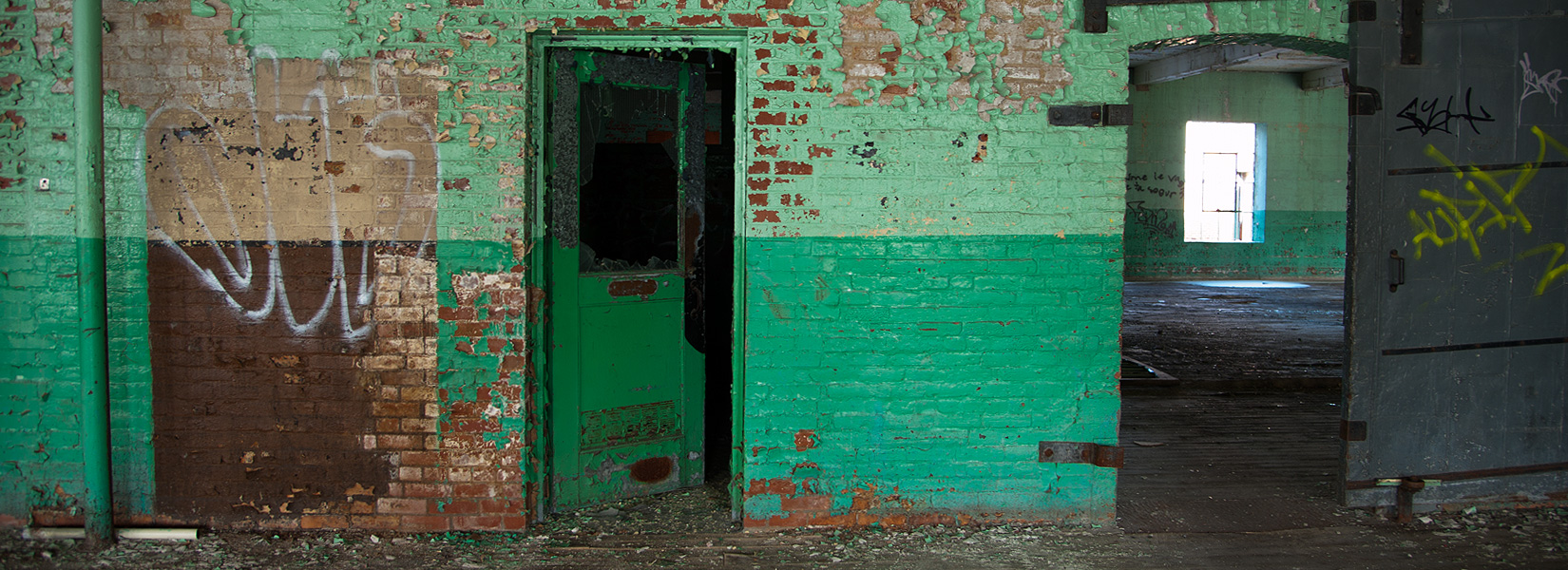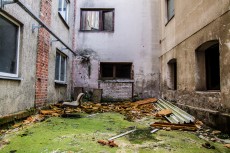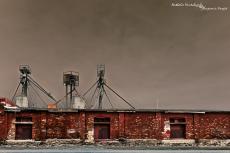It can not be said that the place is in a good shape. The water infiltrates through every small hole in the roof to the point of offering on this cold winter night a skating rink on each floor. Moreover, the ice must make more than eight...
The Belding Corticelli abandoned plant
No more abandoned...
It is in 2004 that the old factory Belding Corticelli has been shut down. Since then, it has been abandoned and floors has been waved at the mercy of weather that infiltrate by the roof and windows. Long time ago, there has been manufactured elastic and laces here. The building has been sold in September 2012 to developers who want to transform the plant into a complex of 38 rooms. They also talk about reception rooms, an art gallery, creation spaces for artisans and a restaurant.
The work must begin in spring 2013 and must be completed a year later. And it's a huge projet, I can confirm. While the ground floor was partially burned, the upper floors shows their eight years of neglect: the leaky roof, fungi that grow here and there, the waves in the floors and the mountains of snow inside. In short, the list is long.
However, at the back of the factory there is a place that will make a beautiful terrace, right next to the Coaticook Gorge and the old dam.
Related content
Built in 1921 on the left bank of the Deule in Marquette-Lez-Lille (north of the France), the majestic Grands Moulins de Paris's mill is a huge structure adrift waiting for a renaissance that is pending since few decades.
The history of...
Located in the region of Baranja in Croatia, Šećerana is a settlement of 559 inhabitants near Beli Manastir. Today forgotten and half destroyed, the old Baranja Sugar factory has been built in 1898 and became a state company in 1906. Funded with...
Hochelaga-Maisonneuve has been deeply marked by the train, in its development. Even today, it is surrounded by three tracks : the Canadian Pacific to the west, the now abandoned Canadian National to the east and the one of the port of Montreal to...




























